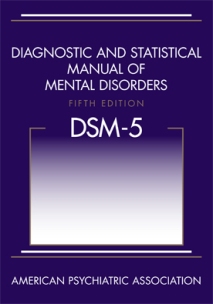Gender Dysphoria Diagnosis to be Moved Out of Sexual Disorders Chapter of DSM-5
December 7, 2012 7 Comments
Dr. Jack Drescher, a member of the subworkgroup on Gender Identity Disorders of the DSM-5 Workgroup on Sexual and Gender Identity Disorders, confirmed yesterday that the Gender Dysphoria Diagnosis will be removed from the sexual disorders chapter and placed in a separate category in the Diagnostic and Statistical Manual of Mental Disorders:
GD is supposed to be placed in a chapter of its own, no longer linked with sexual dysfunctions and paraphilias (which will also have chapters of their own)
This reclassification, along with the change in title from Gender Identity Disorder to Gender Dysphoria, is a significant improvement in the diagnostic coding used for access to medical transition care, for trans and transsexual people who need it. Preceding diagnoses of Transsexualism/Gender Identity Disorders were grouped with “psychosexual” disorders in the DSM-III. They were briefly moved to the class of Disorders Usually First Evident in Infancy, Childhood or Adolescence in the DSM-III-R in 1987 but were returned to the sexual disorders chapter in the DSM-IV, and DSM-IV-TR. Community advocates and supportive medical providers have long raised concern that this placement was clinically misleading and reinforced false stereotypes about gender diversity. Gender identity is not specifically related to sexuality, sexual orientation or sexual dysfunction. Political and religious extremists have exploited the sexual disorder grouping in the DSM to sexualize gender diversity and defame trans people as deviant. Trans and transsexual individuals have consequently lost their jobs, homes, families, children, and civil justice.
The DSM-5 working group responsible for sexual and gender diagnoses hinted at a possible change in diagnostic placement in February, 2010, stating
The subworkgroup questions the rationale for the current DSM-IV chapter Sexual and Gender Identity Disorders, which contains three major classes of diagnoses: sexual dysfunctions, paraphilias, and gender identity disorders… Various alternative options to the current placement are under consideration.
The decision to separate the revised Gender Dysphoria category from sexual disorders is consistent with a previous determination by the working group to remove sexual orientation specifiers from the diagnostic criteria. While many shortcomings remain in the proposed Gender Dysphoria diagnosis, this change in placement in the DSM represents forward progress for trans and especially transsexual individuals.
Unfortunately, the DSM-5 Task Force and APA Board of Trustees retained the Transvestic Disorder category in the sexual disorders chapter. Previous known as Transvestic Fetishism, it is grouped with paraphilic diagnoses such as pedophilia and exhibitionism and authored by Dr. Raymond Blanchard of the Toronto Centre for Addiction and Mental Health (formerly called the Clarke Institute of Psychiatry). This punitive and scientifically capricious category maligns many gender variant people, including transsexual women and men, as mentally ill and sexually deviant, purely on the basis of nonconforming gender expression. It is written to promote Blanchard’s unfounded theories of “autogynephilia” and “autoandrophilia” that conflate social and medical gender transition with fetishism. More than 7000 people have signed an online petition, sponsored by the International Foundation for Gender Education (IFGE), calling for the removal of this harmful diagnosis from the DSM.
Copyright © 2012 Kelley Winters, Ph.D., GID Reform Advocates

